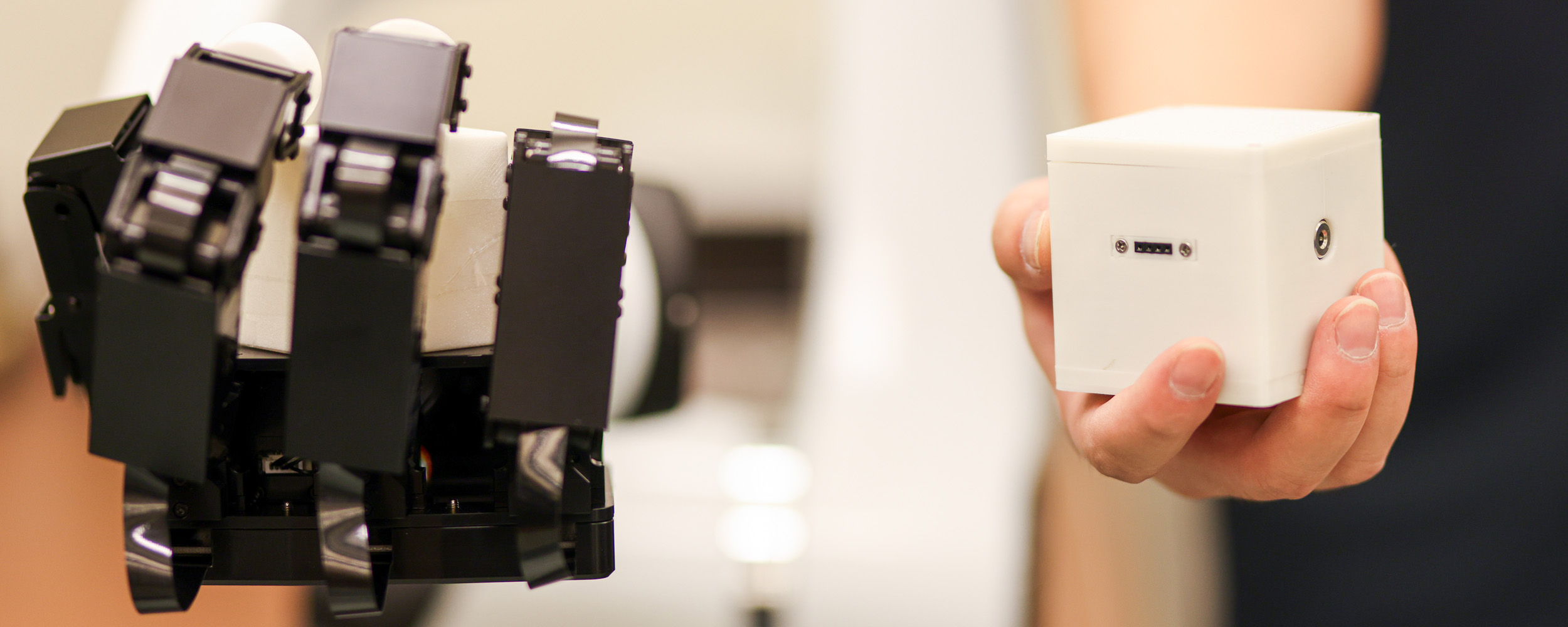
CEAT faculty make advances in human-robot telemanipulation
Monday, September 9, 2024
Media Contact: Desa James | Communications Coordinator | 405-744-2669 | desa.james@okstate.edu
Dr. Lingfeng Tao, assistant professor and coordinator of mechatronics and robotics, and Dr. He Bai, associate professor of mechanical and aerospace engineering, both from the College of Engineering, Architecture and Technology, have received a National Science Foundation EAGER award totaling $160,000.
The award funds their research on developing advancements to telemanipulation technologies that could transform health care, disaster response and more.
Their project aims to advance teleoperation systems for robotic hands by transitioning from basic motion imitation to developing more intuitive and outcome-driven control systems. These advancements have the potential to significantly impact various industries by enhancing the precision and effectiveness of remote robotic manipulation.
Innovative approach to telemanipulation
Tao and his team aim to revolutionize human-robot collaboration by integrating advanced deep reinforcement learning algorithms and multi-modal perception systems into a bi-directional control and feedback telemanipulation systems.

These systems integrate diverse sensory technologies, including inertial measurement units, computer vision methods and convolutional neural networks, enabling the AI-controlled robot to accurately interpret and execute human commands based on desired task outcomes. The systems utilize multiple feedback devices — such as visual, auditory and haptic — to create a cohesive and intuitive experience for the operator. This system enhances human-robot interaction by providing comprehensive feedback, enabling the operator to make more informed decisions and perform tasks more effectively and safely.
“Our approach allows robots to interpret and execute human commands more accurately while minimizing the cognitive and physical demands on operators,” Tao said. “This will make telemanipulation systems much easier to learn and use, requiring less training and making the technology more accessible across different sectors.”
Applications across key industries
The potential applications of this research span several critical industries:
- Health Care: Enhanced precision in telesurgery, allowing surgeons to perform delicate procedures remotely with improved control and safety.
- Disaster Response: Remote handling of hazardous materials or navigating through dangerous environments, such as collapsed structures, to perform search and rescue operations without putting human responders at risk.
- Space and Deep-Sea Exploration: Conducting complex tasks in space or deep-sea environments where direct human involvement is not feasible, such as assembling structures or repairing equipment.
- Manufacturing: Automating assembly lines where precise, flexible manipulation of objects is required, improving efficiency and reducing the need for human intervention in repetitive or dangerous tasks.
Inspiring the next generation
In addition to its industrial applications, this research is also helping to inspire future innovators. The team is actively involved in K-12 STEM education, bringing hands-on robotics demonstrations to students through outreach activities like 4-H Robotics Exploration Day and mentorship for the Stillwater High School Robotics Team.
“We want to inspire students by showing how advanced robotics can solve real-world problems,” Tao said.
The research team is planning more educational initiatives, including summer camps and short lectures.
Looking ahead
Tao notes that the most crucial aspect of this research is its focus on enhancing human-robot collaboration in complex and safety-critical tasks. By leveraging advanced perception systems, this research has the potential to set new standards in telemanipulation, making human-robot teaming safer, more precise and more intuitive across multiple industries.
“We’re excited to address these challenges and create solutions that will impact industries worldwide,” Bai said.
Learn more about their research by visiting Tao's webpage and Bai's webpage.
